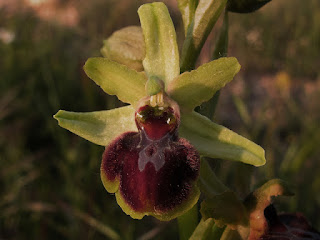By Helen Roberts
As I sit at my desk this morning, staring out the window, the weather is dire. There is slanting torrential rain and high winds, a typical December day perhaps.
Here in the UK, the seasons are changing and we are experiencing extremes of weather. For example, we have had wetter, milder winters in the southwest over the last couple of years along with increased flooding, particularly on the Somerset Levels. And then there was the very slow start to spring this year, with temperatures well below average in April. This was followed by a very hot end to the summer and warmer-than-average temperatures throughout autumn.
These changes to the seasons are linked to global climate change and are throwing the UK’s wildlife into disorder and affecting the fine balance of habitats and ecosystems. This is not a good scenario for biodiversity in the UK. Seasonal timing is off. When seasons start and end is shifting, and the length of the season itself is changing, making ‘growing seasons’ a more fluid concept. There is also increased risk for most gardeners of a ‘false spring’. Many plants and animals are changing their geographical ranges in order to adapt to these changes.
One of the most significant effects has been the disruption of lifecycle events and these are manifesting themselves in different ways. Bird migration, insect emergence, incidence of pests and diseases and flowering times are being thrown out of kilter.
Researchers from the University of East Anglia recently analysed 37 years worth of data from the UK Butterfly MonitoringScheme (UKBMS) and found that extreme weather events were causing population crashes of butterflies. Uncommonly high rainfall events during the cocoon life stage affected 25% of UK butterfly species. And more than half of species were affected by extreme-heat during the overwintering life stage, possibly due to the increased incidence of disease or the effect of a ‘false spring’, causing butterflies to emerge too early only to be decimated by a return to cooler temperatures.
Warm temperatures are not all bad for butterflies though, as they will benefit from hot temperatures over the summer months when they are in their adult form and resources are plentiful. However, if populations crash more frequently than they expand, these extreme weather events could threaten UK butterflies.
 |
| The spider orchid (Ophrys sphegodes). Photo: Jacinta Iluch Valero via Flickr [Creative Commons] |
Changes in seasonal timing are also knocking the relationships between plants and animals out of sync, including the delicate balance between plants and pollinators. Thiscan be detrimental to the balance of entire ecosystems. An elegant study carried out by scientists from Kew and the University of East Anglia found that earlier springs brought about by rising temperatures are affecting the relationship between a rare spider orchid (Ophrys sphegodes) and its sole pollinator, the solitary miner bee (Andrena nigroaenea).
This particular orchid has a flower that resembles and smells like a female miner bee and it uses this deceit in order to lure the male miner bee in. The male attempts to mate with the flower and by doing so, pollinates the flower. The plant has evolved to flower at the same time as the male bees emerge, but before the females do.
What the researchers discovered, by looking at the data set going back to 1848, was that rising temperatures are causing the relationship between orchid and bee to break down. Although rising temperatures cause both the bee to emerge and the orchid to flower earlier, the effect on the bees is much more pronounced. The male bees emerge much earlier and the orchids now flower as the female bees emerge. This means the males are not “pseudocopulating” with the flower because the real thing is already available and so the rare spider orchid is having fewer pollinations.
However bleak this picture may seem, plants and animals do have the ability to adjust to seasonal changes caused by climate change, it is just whether they can adapt quickly enough for these intricate ecological relationships to remain intact.
Helen Roberts is a trained landscape architect with a background in plant sciences. She is a probationary member of the Garden Media Guild and a regular contributor to the University of Bristol Botanic Garden blog.


